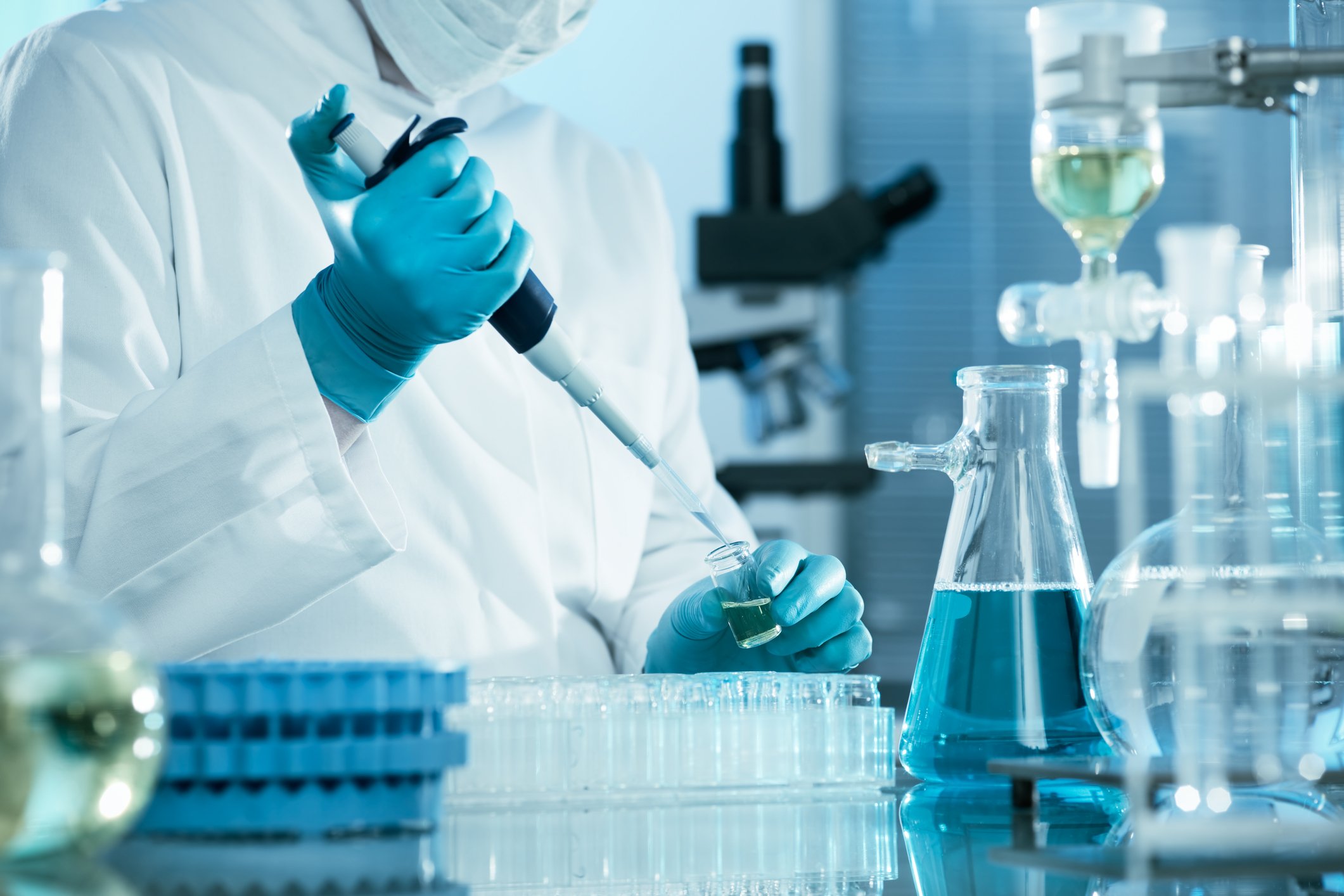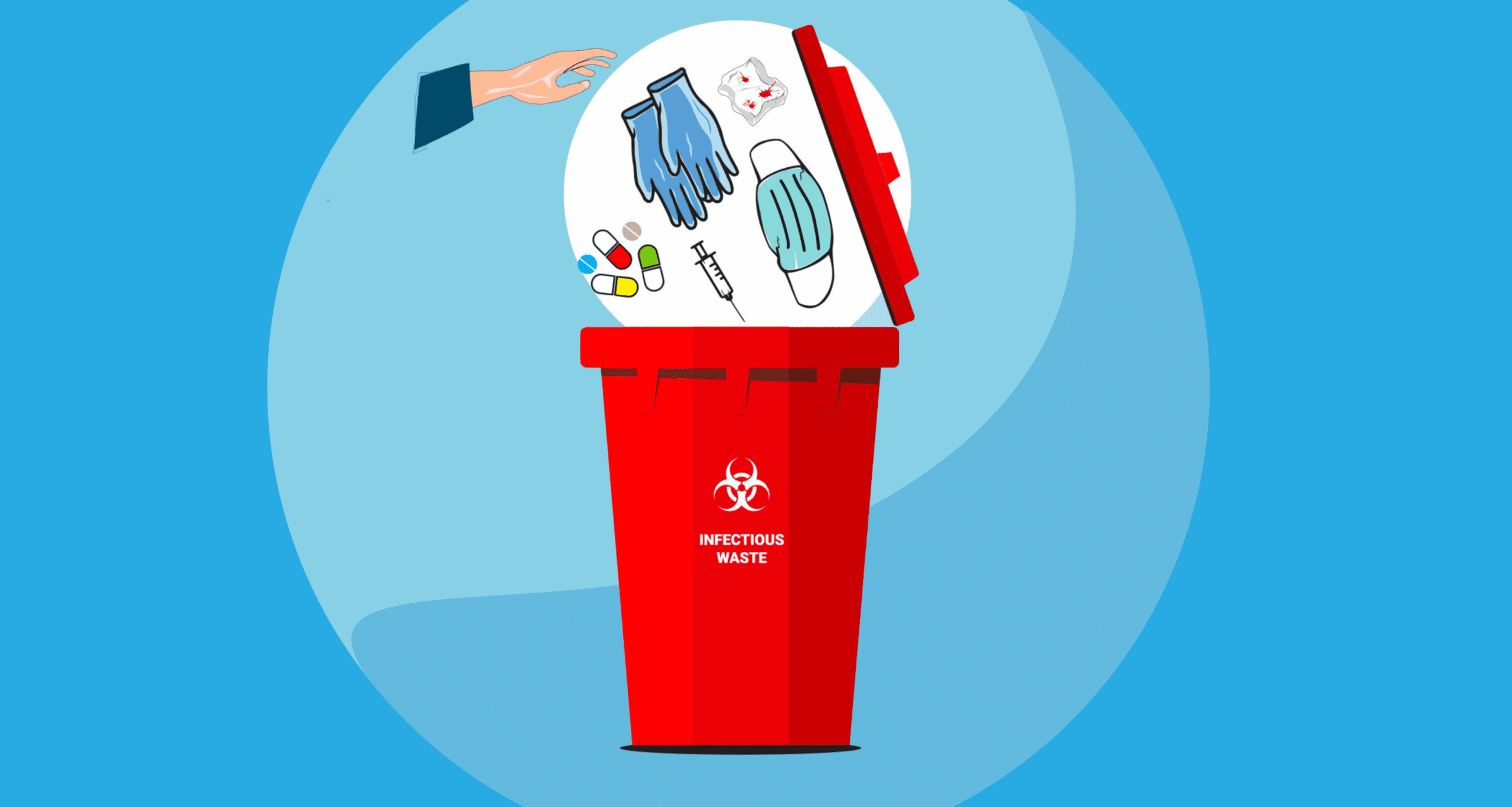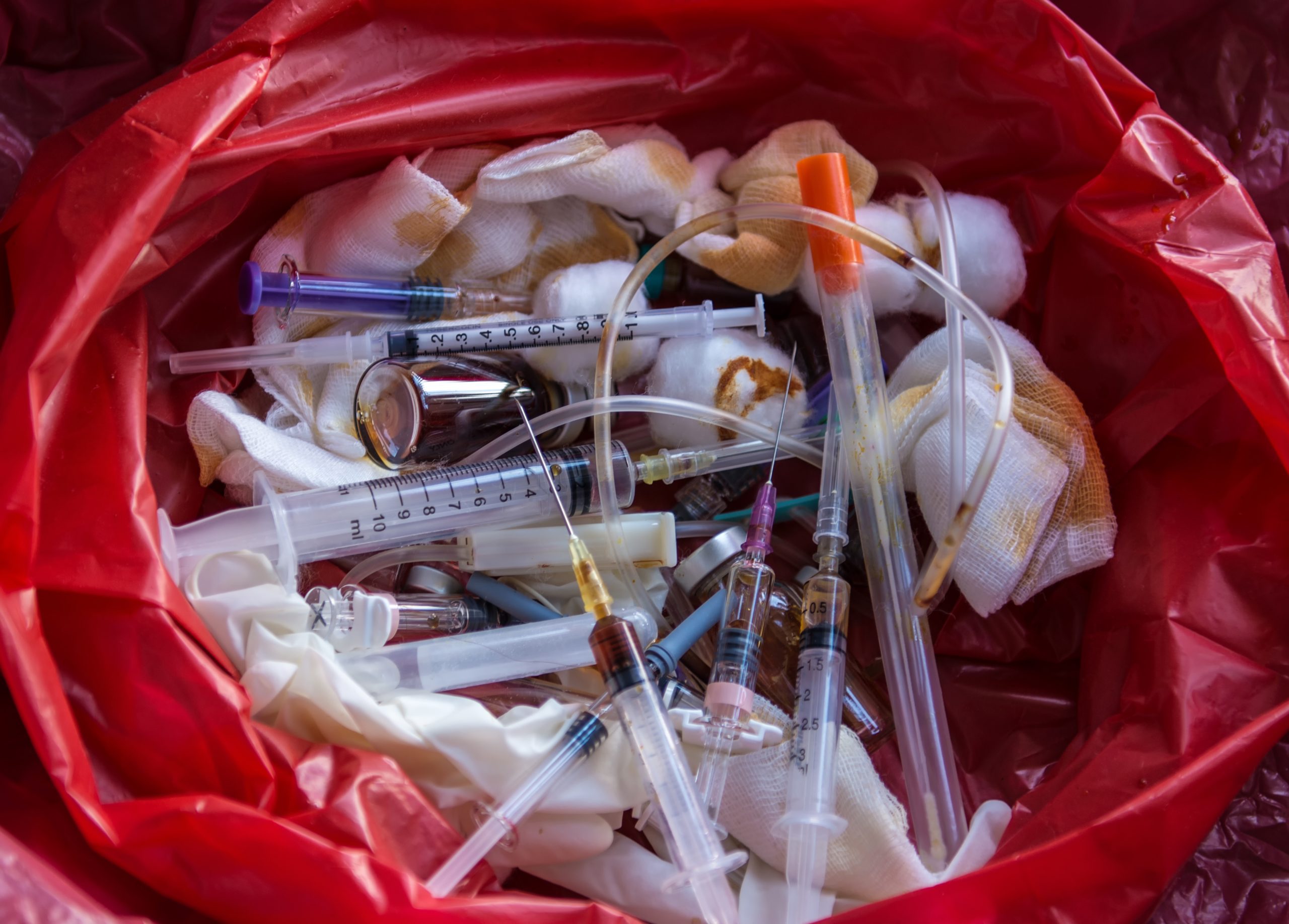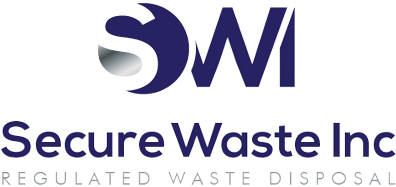Healthcare Waste Disposal: Safely Disposing Contaminated Lab Equipment – Expert Solutions
Healthcare waste, particularly contaminated lab equipment, poses significant risks to public health, the environment, and medical personnel if not correctly managed.
Laboratories generate a diverse range of hazardous waste, including sharps, test tubes, biohazardous fluids, culture plates, and more, each carrying potential risks of infection or chemical exposure.
Without proper healthcare waste disposal, these materials can spread disease, contaminate ecosystems, and create legal liabilities for healthcare facilities.
The solution to this problem is the adoption of modern disposal practices that combine regulatory compliance, including OSHA and WHO guidelines, with practical strategies like sterilization, secure containment, and environmentally responsible waste treatment.

In this blog, we have detailed best practices for disposing of contaminated lab equipment, highlighting practical strategies, compliance measures, and innovative solutions, as safe disposal is not just a matter of compliance; it’s a critical component of responsible healthcare.
What Makes Lab Equipment Contaminated?
Laboratory equipment becomes contaminated when it comes into contact with biological, chemical, or radioactive substances that pose health or environmental hazards.
- Biological contamination is the most common and occurs when equipment is exposed to infectious agents such as bacteria, viruses, fungi, or human and animal tissues. For instance, pipettes, culture plates, and test tubes used in microbiology or clinical labs often carry residual microorganisms.
- Chemical contamination happens when hazardous chemicals, solvents, reagents, or toxic compounds remain on glassware or instruments, potentially causing harmful reactions or exposure.
- Radioactive contamination occurs in labs handling isotopes, where equipment surfaces may carry residual radiation. Contamination can also arise from improper handling, cross-use of tools without sterilization, or spills, making thorough decontamination protocols critical for lab safety.
The Hidden Danger in Every Lab Drawer
Behind the organized appearance of most laboratories lies an often-overlooked threat, contaminated or forgotten equipment tucked away in drawers and storage areas. These items, from used pipette tips and scalpels to expired reagents and cracked glassware, can harbor infectious agents, toxic chemicals, or sharp hazards long after use. When such items are improperly stored or mislabeled, they can lead to accidental exposure, cuts, chemical burns, or even cross-contamination of new experiments. Moreover, small residues left on lab tools can produce chemical reactions or release harmful vapors over time. Proper segregation, labeling, and routine audits are crucial for identifying and safely disposing of these hidden dangers before they cause harm.
Disposal Protocols That Must Be Followed
Definition & Regulation of Regulated Medical Waste
Lab equipment contaminated with blood, body fluids, cultures, or other potentially infectious material (OPIM) falls under “regulated medical waste.” The CDC defines this category and requires that such equipment be handled, stored, and disposed of in accordance with specific containment, labeling, and treatment rules.
OSHA Bloodborne Pathogens Standard (29 CFR 1910.1030)
Equipment or sharps contaminated with blood or OPIM must be placed in containers that are: closable; puncture-resistant; leak-proof; and properly labeled or color-coded. Sharps must not be recapped, bent, or broken by hand.
EPA Hazardous Waste Regulations (RCRA Subpart K for Academic Labs)
Under the EPA’s Resource Conservation and Recovery Act (RCRA) Subpart K, academic laboratories handling contaminated equipment with hazardous chemicals must follow specific waste management standards. This regulation (40 CFR Part 262) provides colleges, universities, and teaching hospitals with more flexible procedures for identifying, labeling, and safely storing healthcare waste before disposal. It promotes safer on-site handling, clear accountability, and timely removal of hazardous materials while ensuring environmental compliance and reducing risks associated with chemical contamination and improper waste storage.
Accumulation Limits & Time Limits
Under RCRA, laboratories are classified based on the amount of hazardous waste they generate.
- VSQG = tiny quantity generator
- SQG = small quantity
- LQG = large quantity
These statuses impose maximum amounts of waste that can be stored, and maximum durations before hazardous waste removal is supposed to be sent for treatment or disposal.
Decontamination Before Maintenance, Surplus, or Disposal
Equipment used with biological agents must be cleaned and decontaminated before servicing, moving, or disposing (including surplus sales). For example, biosafety cabinets must undergo professional decontamination; refrigerators, incubators, and other equipment must be sterilized, and surfaces must be disinfected. A release or decontamination certificate is often required.
Labeling & Tagging Requirements
Any equipment or waste that is contaminated must be clearly labeled (e.g., “Biohazard,” “Regulated Medical Waste,” “Hazardous Waste”) with appropriate warning symbols. Labels must accurately reflect the type of contamination, contents, date, generator, and other relevant details. This helps staff and waste handlers recognize hazards.
Safe Containment & Storage
Contaminated equipment or materials awaiting disposal or treatment as healthcare waste must be stored in leak-proof, puncture-resistant, appropriately sealed, and labeled containers. Storage areas should be well-ventilated, pest-free, and adhere to state and federal storage time and safety limits. Under RCRA, VSQGs can store waste indefinitely if the amount is under 100 kg/month; SQGs can store waste up to 6,000 kg for 180 days; and LQGs can store waste for up to 90 days, all with proper labeling, containment, and safety measures.
Treatment / Deactivation Before Final Disposal
Before disposal of healthcare waste, contaminated lab equipment must often be treated to inactivate biological agents (e.g., via autoclaving, chemical disinfection, or incineration) or neutralize hazardous chemicals. Radiation decontamination must be performed if the equipment was used with radioactive materials.
Shipments and Off-site Disposal
Suppose disposal involves transporting contaminated equipment off-site (e.g., to a licensed healthcare waste management or incineration facility). In that case, the shipment must comply with DOT (Department of Transportation) regulations, manifest requirements under RCRA, and permit/licensing regulations of the destination facility.
Waste Management Plan & Record-Keeping
Laboratories must maintain a documented medical waste management plan that defines: roles and responsibilities; types of contaminated waste generated; storage, labeling, and treatment methods; frequency of healthcare hazardous waste disposal; compliance with federal, state, and local laws; and records of disposal or decontamination actions (e.g., certificates, manifests). These records are often audited.
Tech, Tools & Tracking: Innovations in Contaminated Lab Equipment Disposal
- Smart Bins with RFID: Bins equipped with Radio Frequency Identification (RFID) technology can automatically identify and sort waste, ensuring that each type is directed to the appropriate healthcare hazardous waste disposal or recycling stream. RFID technology adds a layer of precision, allowing for accurate tracking throughout the medical waste management lifecycle.
- Automated Waste Segregation: Modern laboratories are moving toward automated waste segregation and tracking to ensure every container is handled correctly. Simple measures, such as color-coded bins and labels, can be enhanced with technology. For example, barcoding on waste bags or containers is a low-cost solution that links each item to its point of generation. Staff scan a barcode before disposal, logging the time, location, and type of waste into a central database.
- Lab-On-a-Chip Devices: These miniaturized devices integrate multiple laboratory functions on a single chip, reducing the need for traditional lab equipment and minimizing waste generation.
- Smart Waste Management Systems: Systems equipped with IoT sensors monitor waste levels in real-time, optimizing collection routes and schedules, reducing fuel consumption, and improving overall efficiency.
Preventing Hidden Risks: Fostering a Safety-First Culture in the Lab
Improper PPE Use – Failing to use gloves, goggles, or lab coats can expose staff to biological, chemical, or radioactive hazards.
Cross-Contamination – Using the same tools for multiple experiments without proper sterilization spreads pathogens and chemicals.
Sharps Mismanagement – Leaving needles, scalpels, or broken glass in open trays increases the risk of injury and infection.
Ignoring Labels & Instructions – Misreading or disregarding chemical and biohazard labels can lead to accidents or improper disposal of healthcare waste.
Inadequate Training – Staff unfamiliar with protocols may mishandle equipment or waste, creating hidden dangers.
Closing Thought: It’s Not Just Trash; It’s a Biohazard
Effective healthcare waste disposal of contaminated lab equipment requires more than rules; it demands foresight, accountability, and continuous improvement. Laboratories can achieve proper safety and compliance by partnering with experts. Secure Waste provides reliable, fully compliant healthcare waste disposal solutions, offering state-of-the-art tracking, eco-friendly treatment, and peace of mind for medical and research facilities in Maryland, Virginia, and Washington, D.C. Contact us at 877-633-7328 today to safeguard your lab and ensure responsible disposal practices.
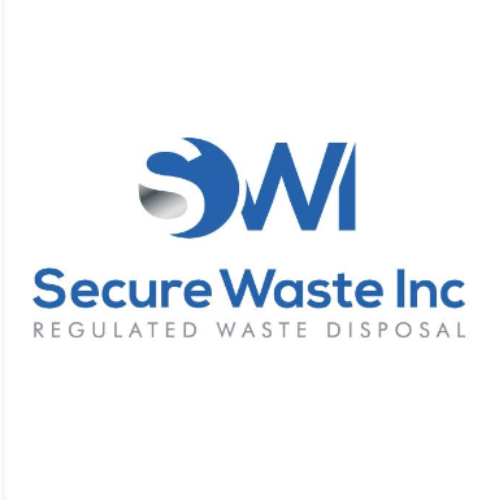
Expert Medical Waste Management: With over 25 years of industry experience, Secure Waste is a trusted local leader in hazardous and biohazardous waste disposal across Maryland, Virginia, and Washington, D.C. Specializing in medical waste management, sharps needle disposal, and biohazard waste removal, the company ensures full compliance with federal, state, and local regulations while prioritizing environmental sustainability.
The company also offers additional services, including secure document shredding and sharps container sales, providing comprehensive solutions for healthcare facilities and businesses. Our cost-effective services help clients maintain regulatory compliance without unexpected costs.
With a commitment to customer satisfaction, Secure Waste offers tailored waste management plans that align with industry best practices. Their team of experts provides reliable, timely, and compliant services, making them the preferred choice for medical waste disposal. For a free waste quote or more information, visit www.securewaste.net
